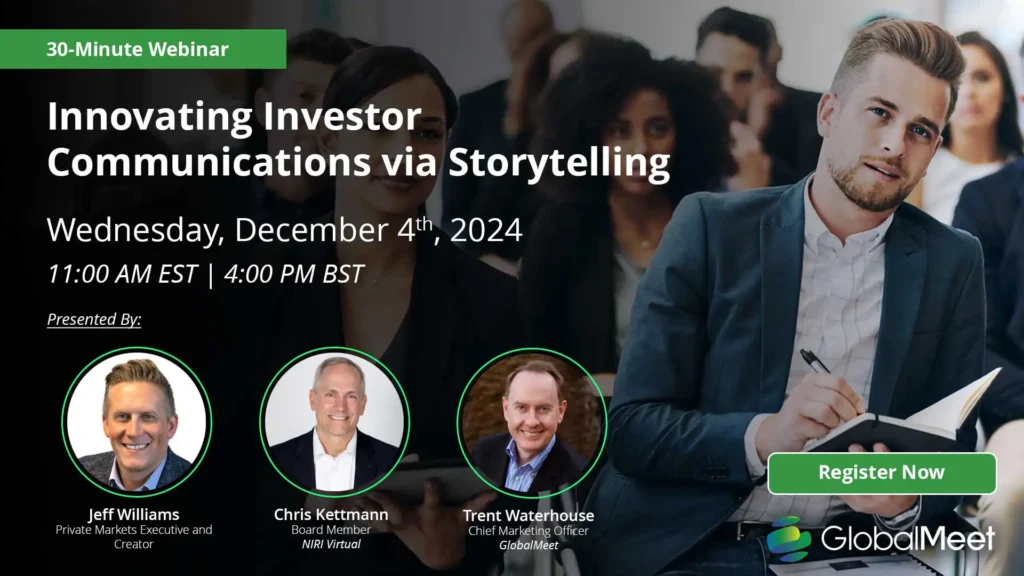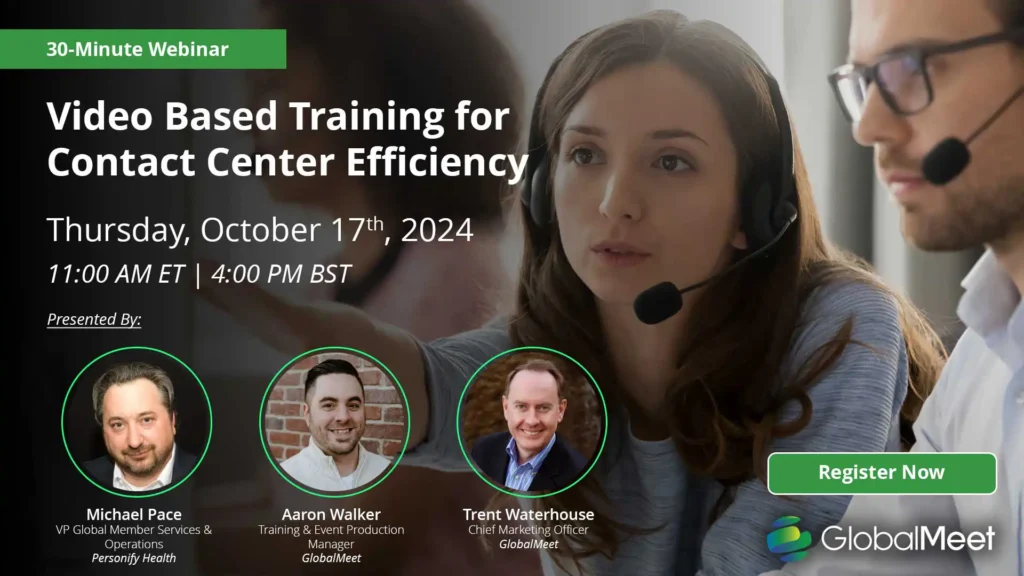
Preventing Digital Burnout While Maintaining High Virtual Event Standards
- by GlobalMeet Blog Team
- ,
As virtual and hybrid events continue to shape the event industry, organizers are facing a new challenge: keeping attendees engaged while avoiding digital burnout. The rapid shift to digital and hybrid formats has brought convenience and accessibility, but it has also led to a rise in screen exhaustion, reduced attention spans, and disengagement. Maintaining high standards for event quality while ensuring that attendees remain energized and invested requires a strategic approach.
Understanding Digital Burnout
Digital Burnout, also known as “Virtual Fatigue,” occurs when prolonged screen exposure and continuous digital interactions overwhelm attendees. Unlike in-person events, virtual settings often lack the natural variations in movement and engagement that help maintain focus. Key factors contributing to Digital Burnout include:
Cognitive Overload
In virtual environments attendees are often expected to process significant quantities of information without physical cues or social breaks. The lack of body language and environmental context can lead to more mental effort being required to interpret conversations leading to virtual exhaustion. Additionally, multitasking during virtual events can increase cognitive strain, making it harder to retain information.
Lack of Movement
Sitting for extended periods in front of a screen can lead to discomfort and decreased focus. Unlike in-person events where attendees naturally move between sessions, networking areas, and refreshment breaks, virtual events often involve prolonged sedentary behavior. This can result in stiffness, eyes strain, and reduced concentration levels.
Passive Participation
Without interactive elements, attendees may lose interest of begin to multitask. When sessions are lecture-heavy with little audience involvement, engagement levels drop. Attendees may check emails, browse social media, or mentally disengage, diminishing the effectiveness of the event.
Poorly Structured Schedules
Lengthy sessions with minimal breaks can make it difficult to maintain engagement, and overloading the agenda with back-to-back presentations can lead to attendees mentally checking out. Without designated time for focus, reflection, discussion, or breaks, participants can struggle to remain focused throughout the course of the event.
Recognizing these challenges is the first step in designing events that prioritize attendee well-being while maintaining high standards of content delivery.
Event Design Strategies to Reduce Digital Burnout
A well-structured event schedule and engaging format can significantly reduce fatigue and keep attendees invested. Here are some key strategies:
Optimize Session Length and Scheduling
- Keep sessions concise, ideally between 20 to 45 minutes, to align with natural attention spans.
- Use micro-sessions or panel discussions to introduce variety.
- Build buffer time between sessions to allow attendees to recharge.
- Implement asynchronous content options, such as pre-recorded sessions, to provide flexibility.
Integrate Breaks and Wellness Activities
- Schedule frequent breaks to encourage movement and screen breaks.
- Offer guided wellness activities such as stretching, mindfulness sessions, or virtual networking rooms.
- Create a balanced mix of live and on-demand content to reduce screen fatigue.
Encourage Active Participation
- Use interactive tools such as live polls, Q&A sessions, and breakout rooms.
- Encourage attendees to participate in gamification activities, such as scavenger hunts or leaderboards.
- Foster social connections through virtual networking lounges, discussion forums, and interactive chats.
Leveraging Technology to Enhance Engagement
Advancements in technology have made it easier than ever to create engaging virtual and hybrid experiences. Event organizers can use various digital tools to combat fatigue while enhancing interaction:
Enhanced Interactive Experiences
Dynamic video presentation and live demonstrations can help keep attendees engaged by breaking away from static slideshows. Engaging virtual networking spaces — such as structured breakout rooms or themed discussion groups — can encourage meaningful discussion by facilitating organic interactions. Additionally, using tools such as interactive digital whiteboards and chat features for collaboration can enable participants to contribute actively to discussions, fostering a more engagement and immersive learning environment that improves retention and participation.
Enhanced Engagement Tools
Live captioning and transcription tools can improve accessibility and help attendees stay engaged, while real-time chat and social media integrations facilitate conversations and encourage interaction. Choosing a high-quality Hybrid Event Platform will allow access to interactive features, including session reminders, personalized content, and vital networking opportunities.
AI Powered Personalization
In the modern events space AI is becoming more and more common a tool to enhance experiences. AI-driven recommendations can tailor event experiences by suggesting relevant sessions based on attendee interests and offering personalized agendas that allow attendees to choose sessions that align with their preferences.
The Role of Hybrid Events in Reducing Digital Burnout
Hybrid events, which combine in-person and virtual components, offer a more flexible and engaging experience that can help reduce virtual fatigue.
Increased Flexibility
- Attendees can choose between virtual or in-person participation, reducing screen time for those who prefer face-to-face engagement.
- Hybrid formats allow for asynchronous participation, giving attendees the option to watch recorded sessions later.
Blended Networking Opportunities
- Hybrid events enable in-person and virtual attendees to interact through networking platforms, video meetups, and discussion groups.
- AI-powered matchmaking tools can suggest relevant connections based on shared interests.
Diverse Content Delivery
- Incorporating a mix of live keynotes, pre-recorded presentations, and interactive workshops prevents monotony.
- Organizers can offer breakout sessions with a mix of online and in-person participants, ensuring a dynamic experience.
Optimizing Speaker and Content Delivery
A high-quality event is only as good as its speakers and content delivery. To maintain engagement, organizers should:
Train Speakers for Virtual Engagement
The right speaker can make or break an event. Encourage speakers to use dynamic visuals, storytelling, and audience interaction to ensure that they make the most of each session. Provide media training to help speakers adapt to virtual presentation styles and keep more listeners engaged. Finally, keep sessions concise and engaging, avoiding lengthy monologues.
Diversify Content Formats
Diverse content helps keep minds engaged. Use a combination of live sessions, panel discussions, and fireside chats to avoid stagnation. Encourage audience involvement through real-time polls, Q&A, and chat interactions, and incorporate case studies, demonstrations, and visual storytelling to enhance content enjoyment and retention.
Create On-Demand Options
It’s almost a certainty that some of your participants will need to miss some or all of a session. Offer session recordings for attendees who may need to step away so that they don’t miss out on valuable content. Provide downloadable resources, such as slide decks and supplementary materials for post event review, and allow attendees to revisit content at their convenience to reinforce learning.
Post-Event Strategies to Sustain Engagement
The event experience shouldn’t end when the sessions conclude. Effective post-event strategies help maintain engagement and provide long-term value:
Follow Up with Attendees
- Send personalized thank-you emails with key takeaways.
- Share recorded sessions and additional resources for further learning.
- Offer post-event surveys to gather feedback and improve future events.
Encourage Continued Networking
- Keep event platforms active post-event to facilitate ongoing discussions.
- Create community spaces, such as LinkedIn or Slack groups, to foster engagement beyond the event.
Analyze Event Data for Improvement
- Use analytics to measure attendance, engagement levels, and session popularity.
- Identify patterns and use insights to optimize future events.
Conclusion
Preventing virtual fatigue while maintaining high standards requires a thoughtful blend of event design, technology, hybrid strategies, and post-event engagement. By focusing on interactive experiences, leveraging the right tools, and prioritizing attendee well-being, event organizers can create compelling and sustainable virtual and hybrid events.
As the event industry continues to evolve, adopting these best practices will ensure long-term success and meaningful participation, making virtual and hybrid events more engaging and effective for all attendees.



